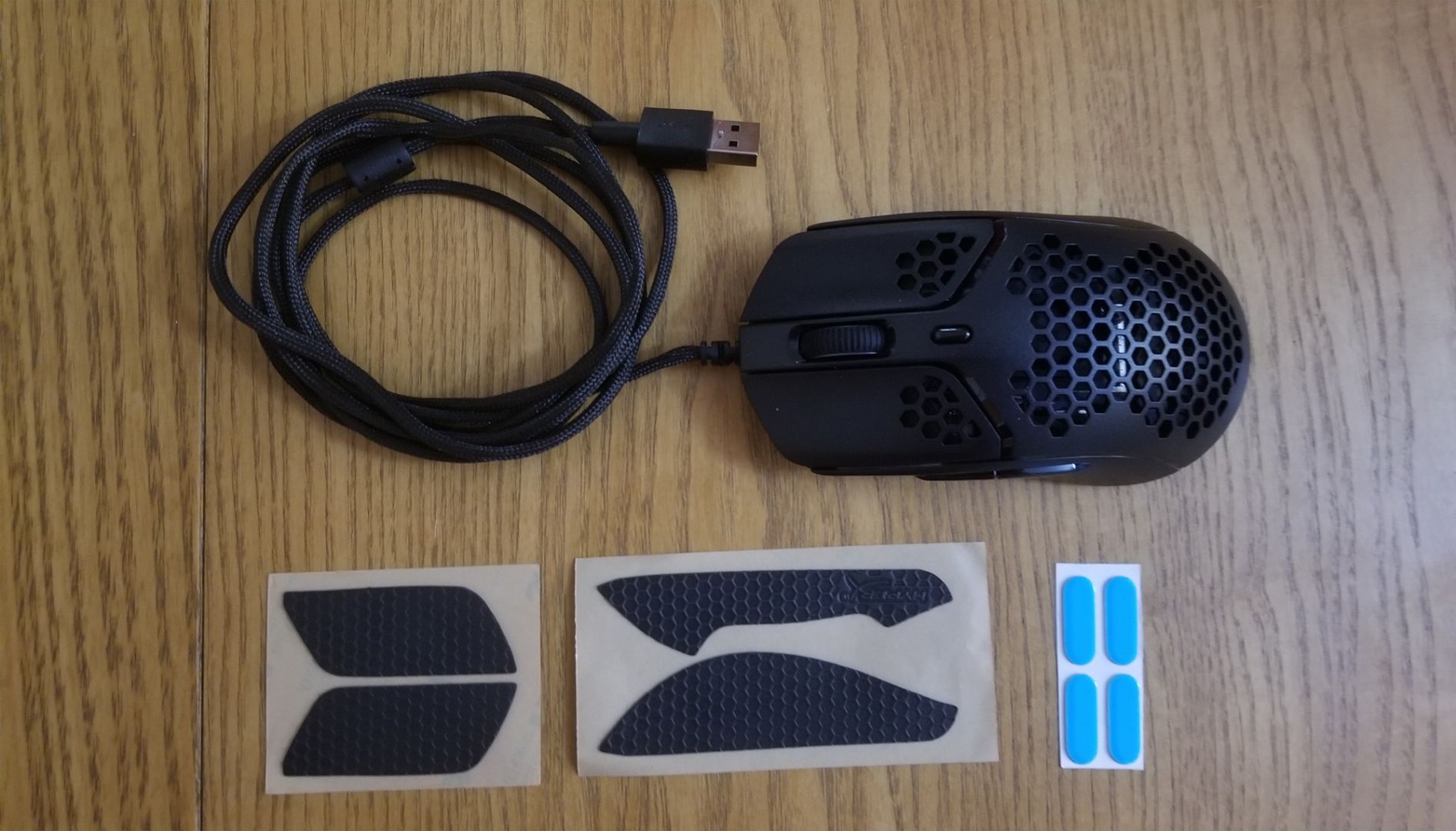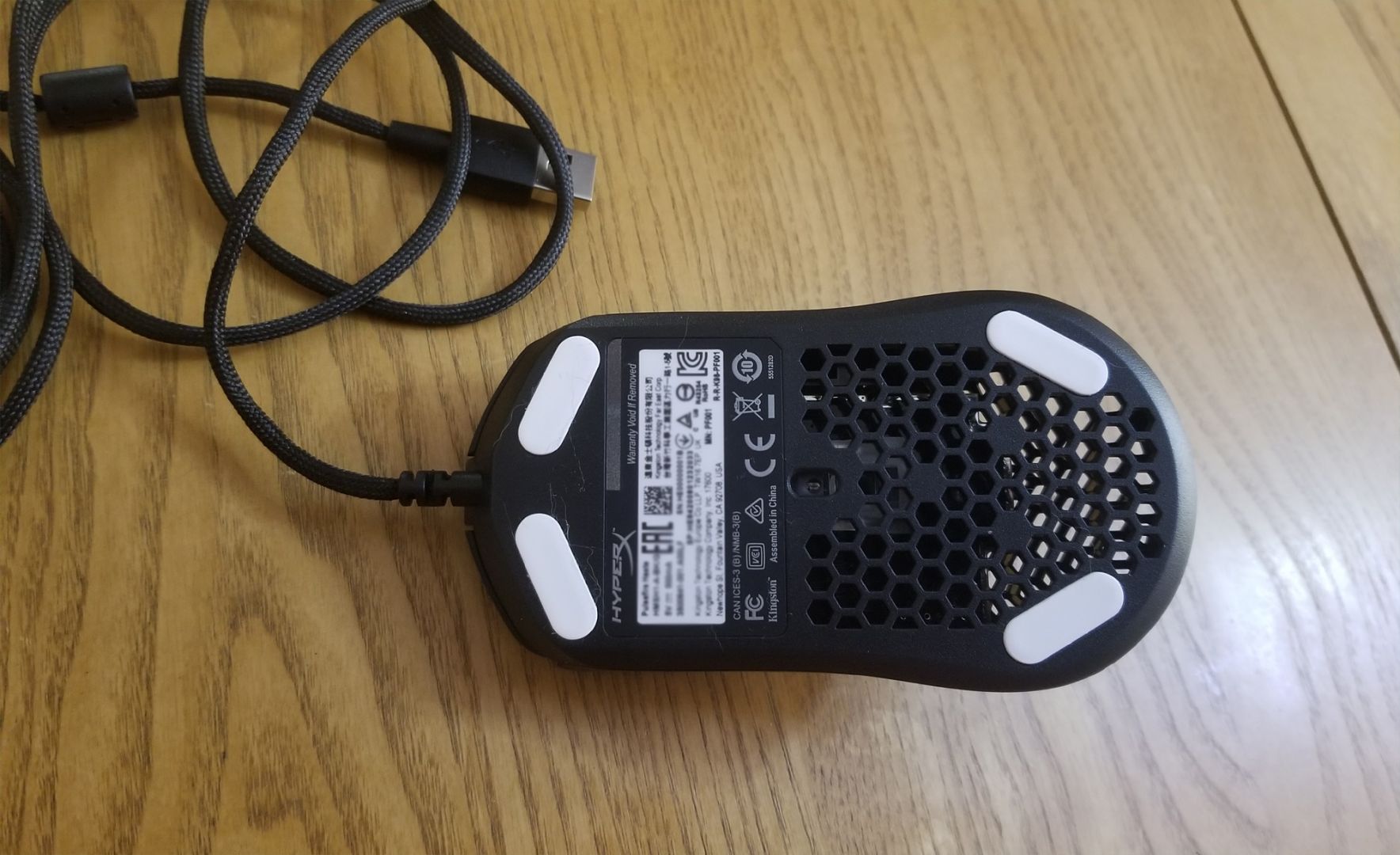

Earlier this week, HyperX released its latest mouse in the Pulsefire line: the Pulsefire Haste. This mouse takes the general shape and configuration shared by other mice in the same family and applies a honeycomb hex shell design to be lighter in weight. At only 59g, the Haste is 28g lighter than the Core (the previous lightest mouse in the wired Pulsefire family) and 41g lighter than the Surge (the heaviest mouse in the same wired family).

The Haste possesses six programmable buttons (the same number as the FPS Pro, Surge, and Dart, but one less than the Core and five less than the Raid) and TTC Golden micro dustproof switches. Since much of the mouse is open to the elements, it’s important than these switches have an anti-dust coating, and they’re also rated up for 60 million clicks (40M more than the Core, FPS Pro, and Raid, and 10M more than the Surge and Dart). Like most of the Pulsefire family (aside from the Core), the sensor can detect up to 16000 DPI natively.
Like the Raid and Dart before it, the Haste has a split button design where the left and right mouse click buttons are separate pieces from the body of the mouse. This provides better responsiveness to light clicks as well as a more consistent clicking experience. Like all the Pulsefire mice I’ve used, the Haste feels comfortable in hand and slides smoothly across surfaces.

Unlike the other Pulsefire mice, the Haste has four small PTFE skates on the bottom corners of the mouse, as opposed to two large surface area skates at the head and foot of the base. It certainly has less friction which, accompanied by the low weight, creates an illusion of the mouse being even lighter than it is. Another difference is that the Haste comes with four replacement skates as well as grip tape (four pieces for the two main mouse buttons as sides of the body). This grip tape is light and a little springy, and is easy to remove if you decide you’d rather go without. The final major difference is the mouse cord. While other Pulsefire mice use a braided cable, the Haste possesses a “HyperFlex” cable. This cable feels extremely light and hollow inside, but seems durable.
While fully usable out of the box, users will need to use HyperX’s free NGenuity software (available only on Windows 10) to change the lighting color/effects settings, DPI settings, and button remapping. There are 4 DPI presets (400 / 800 / 1600 / 3200), but by using NGenuity you can set up to 5 (or delete any extra you don’t want) to any number of your choice up to 16000. The default lighting color/effect is a slow cycle through the rainbow, but in the software you can add up to one triggered effect (fade) as well as three general effects (Cycle, Breathing, Solid). In the button mappings, you can remap any of the six buttons to keyboard functions, mouse functions, multimedia controls, windows mappings, or recorded macros. Here you can also outright disable a button so it’s not mapped to anything.
My general impressions of the Haste are quite favorable. The first time I used it, it was honestly pretty weird. I’m used to my mice having a bit of heft (several years back, I had a mouse which had a variety of adjustable weights), so when taking the Haste for its first spin, I felt like I was going to accidentally throw the mouse into oblivion with my normal arm movements. The partially-exposed nature of the frame also makes the mouse feel slighter and more fragile, so I was also worried about crushing it to pieces within my grip (which suddenly felt Hulk-like in nature). I adjusted quickly, though, and within a day the light weight felt like more of a benefit than something I needed to be mindful of. The mouse also did not shatter within my grasp, which gave me the confidence to begin gripping less gingerly. This in turn exposed the frame’s surprising sturdiness, despite its delicate-seeming appearance. There’s no way the honeycomb plating will be as strong as a cohesive plate, but the Haste won’t be breaking apart anytime soon by using it for its intended purpose (even if that includes gripping it strongly).
I am surprised by how much I like the Haste, now that I’ve been using it for a week. It feels less fatiguing on the arm compared to heavier mice, and has a much smoother glide moving from point to point. For day-to-day activity (most games, as well as for school and work where one uses a lot of repetitive movement), I highly recommend it. I only have two reservations: I might miss the extra buttons for gaming that the Pulsefire Raid provides, and for small, precise movements (e.g. sniping in games), a heavier mouse will sometimes be preferred (such as the Pulsefire Surge) .
At about $50, the Haste is reasonably priced for the promises it delivers on: light weight, smooth movement, anti-dust coated switches that are rated up to 60M clicks, robust keymapping, and standard lighting effects/options. I’m certainly a fan, and if you aren’t in dire need of a large amount of mouse buttons and don’t want extra weight for your personal gaming purposes/preferences, the Haste is an excellent investment.